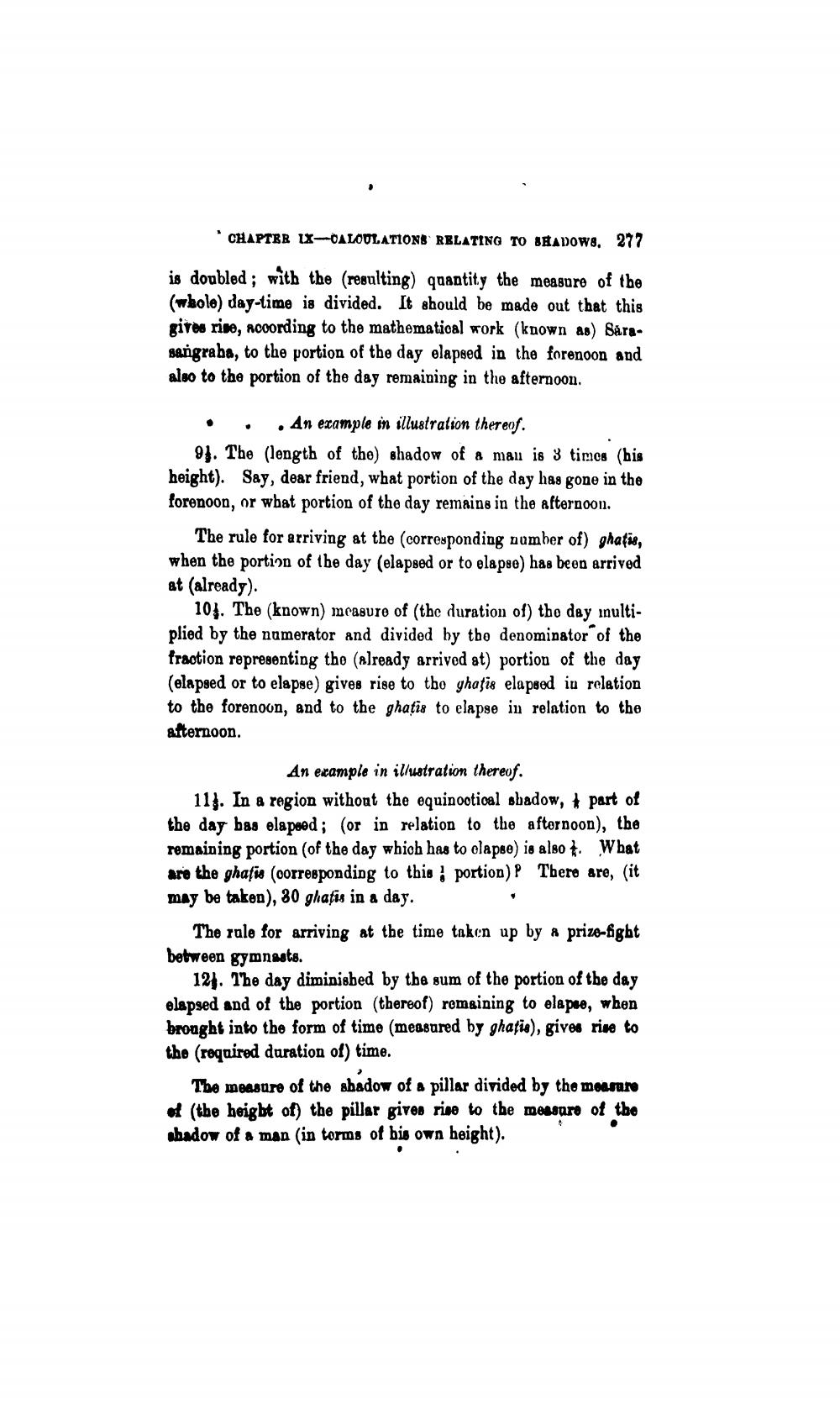________________
CHAPTER IX-CALCULATIONS RELATING TO SHADOWS, 277
is doubled; with the (resulting) quantity the measure of the (whole) day-time is divided. It should be made out that this gives rise, according to the mathematical work (known as) Sarasangraha, to the portion of the day elapsed in the forenoon and also to the portion of the day remaining in the afternoon.
An example in illustration thereof.
.
9. The (length of the) shadow of a man is 3 times (his height). Say, dear friend, what portion of the day has gone in the forenoon, or what portion of the day remains in the afternoon.
The rule for arriving at the (corresponding number of) ghatis, when the portion of the day (elapsed or to elapse) has been arrived at (already).
10. The (known) measure of (the duration of) the day multiplied by the numerator and divided by the denominator of the fraction representing the (already arrived at) portion of the day (elapsed or to elapse) gives rise to the ghatis elapsed in relation to the forenoon, and to the ghatis to elapse in relation to the
afternoon.
An example in illustration thereof.
11. In a region without the equinoctical shadow, part of the day has elapsed; (or in relation to the afternoon), the remaining portion (of the day which has to clapse) is also t. What are the ghație (corresponding to this portion)? There are, (it may be taken), 30 ghatis in a day.
The rule for arriving at the time taken up by a prize-fight between gymnasts.
12. The day diminished by the sum of the portion of the day elapsed and of the portion (thereof) remaining to elapse, when brought into the form of time (measured by ghatis), gives rise to the (required duration of) time.
The measure of the shadow of a pillar divided by the measure of (the height of) the pillar gives rise to the measure of the shadow of a man (in terms of his own height).
•




